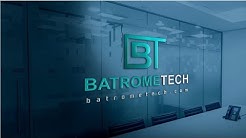Cloud technology has taken over the tech industry in recent years , this has brought up Technologies like PAAS, but what is cloud technology?

⇒Join us on Telegram for more Sure and Accurate football-winning tips every day...click here
Definition of Cloud Technology
Cloud computing is a normal term for something that entails delivering hosted companies over the web. These services are broadly divided into three classes: infrastructure as a service (IaaS), platform as a service (PaaS) and software as a service (SaaS).
The title cloud computing was impressed by the cloud image that is typically used to symbolize the web in flowcharts and diagrams.
Cloud infrastructure has to do with the software parts required to make sure correct implementation of a cloud computing model.
Cloud computing may also be regarded as utility computing or on-demand computing.
Let’s see how cloud computing impacts different aspect of Software
SaaS (software program as a service)
Such a public cloud computing delivers applications over the web via the browser.
The preferred SaaS applications for enterprise could be present in Google’s G Suite and Microsoft’s Office 365; amongst enterprise applications, Salesforce leads the pack.
However just about all enterprise applications, together with ERP suites from Oracle and SAP, have adopted the SaaS model Usually, SaaS applications supply in depth configuration choices in addition to growth environments that allow clients to code their very own modifications and additions.
IaaS (infrastructure as a service)
At a primary degree, IaaS public cloud suppliers supply storage and compute services on a pay-per-use basis
However the full array of services provided by all main public cloud suppliers is staggering: extremely scalable databases, digital non-public networks, large information analytics, developer tools, machine studying, utility monitoring, and so forth. Amazon Web Companies was the primary IaaS supplier and remains the chief, adopted byMicrosoft Azure, Google Cloud Platform, and IBM Cloud.
PaaS (platform as a service)
PaaS offers units of services and workflows that particularly target developers, who can use shared tools, processes, and APIs to speed up the development, testing, and deployment of applications.
Salesforce’s Heroku and Force..com are fashionable public cloud PaaS choices; Pivotal’s Cloud Foundry and Red Hat’s OpenShift could be deployed on premises or accessed via the foremost public clouds.
For enterprises, PaaS can be certain that developers have prepared entry to assets, comply with sure processes, and use solely a particular array of services, whereas operators preserve the underlying infrastructure.
FaaS (Function as a service)
FaaS, the cloud model of serverless computing, provides one other layer of abstraction to PaaS, in order that developers are utterly insulated from the whole lot within the stack beneath their code.
As an alternative to having to deal with digital servers, containers, and utility runtimes, they add narrowly practical blocks of code, and set them to be triggered by a sure event (reminiscent of a type submission or uploaded file).
All the foremost clouds supply FaaS along side IaaS: AWS Lambda, Azure Functions, Google Cloud Functions, and IBM OpenWhisk.
As particularly good thing about FaaS applications is that they consume no IaaS assets till an event happens, decreasing pay-per-use charges.
Also Read : What is Blockchain Technology: Is it Secure?
Characteristics of Cloud Technology
Cloud computing boasts a number of enticing advantages for companies and end users. Among the primary advantages of cloud computing are:
Self-service provisioning:
End users can spin up compute resources for nearly any sort of workload on demand.
An end user can provision computing capabilities, such as server time and network storage, eliminating the standard need for IT directors to provision and handle compute sources
Elasticity:
Firms can scale up as computing needs increase and scale down once more as the needs reduces
This eliminates the necessity for enormous investments in native infrastructure, which can or could not remain active.
Pay per use:
Compute sources are measured at a granular degree, enabling users to pay just for the sources and workloads they use.
Workload resilience: Cloud service suppliers typically implement redundant sources to make sure resilient storage and to maintain users’ necessary workloads working — typically throughout a number of world areas.
Migration flexibility:
Organizations can transfer sure workloads to or from the cloud — or to totally different cloud platforms — as desired or for higher value financial savings or to make use of new features as they emerge.
Broad network entry:
A person can enter cloud knowledge or add knowledge to the cloud from wherever with an web connection and utilizing any system.
Multi-tenancy and useful resource pooling:
Multi-tenancy lets many users share the identical bodily infrastructures or the identical purposes, but nonetheless retain privacy and safety over their very own knowledge.
With useful resource pooling, cloud suppliers service many users from the identical bodily sources.
The useful resource pools of the cloud suppliers must be very massive and versatile sufficient to allow them to service the necessities of a number of users.
So you can see how cloud technology / computing powers most of the apps that we use today, from Facebook to twitter and the list goes on.
What do you think about cloud computing? Have you used it in the past?
Leave your comments below.




